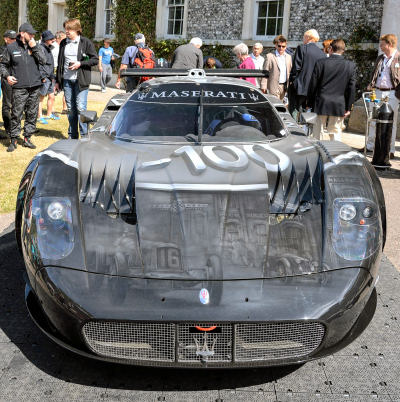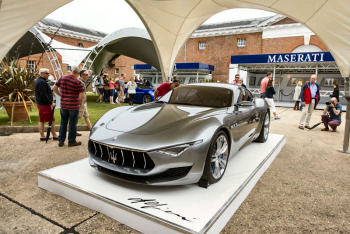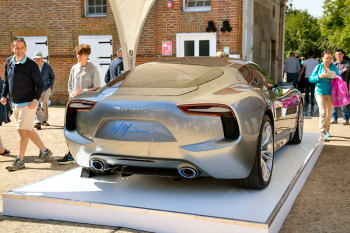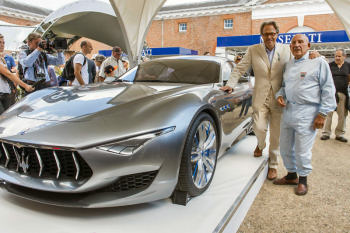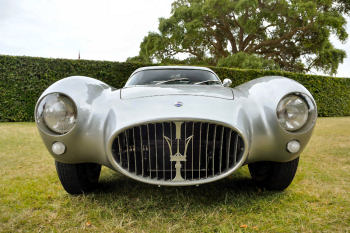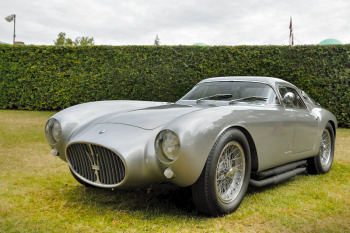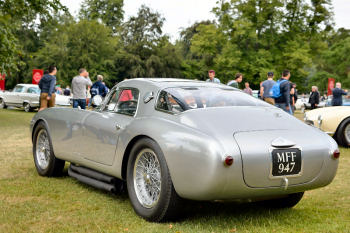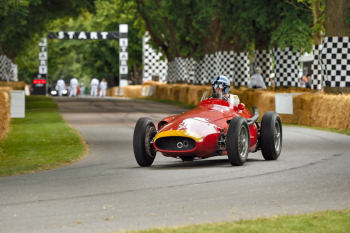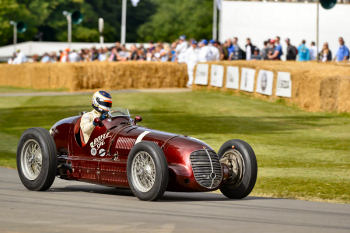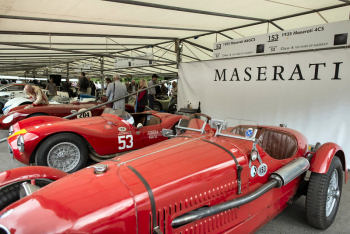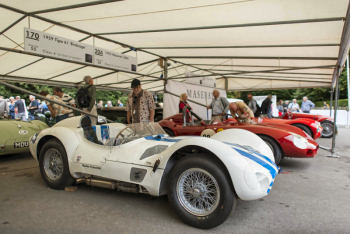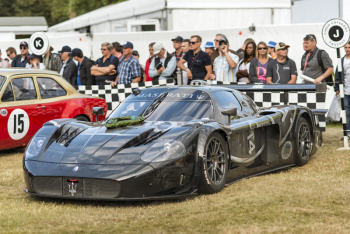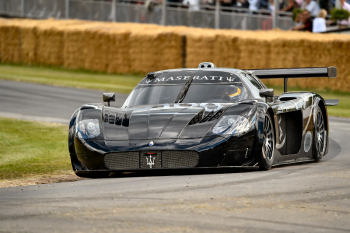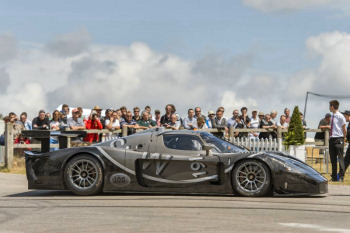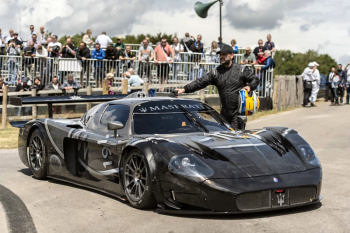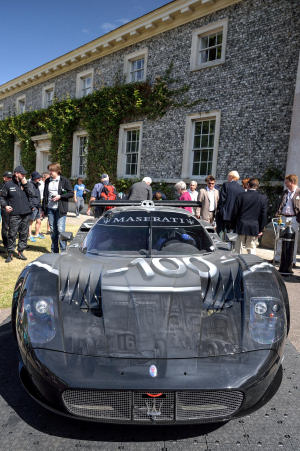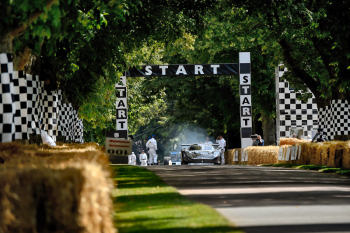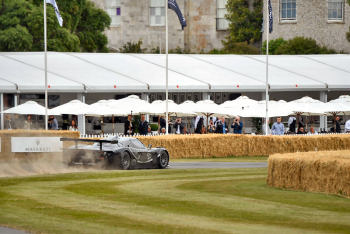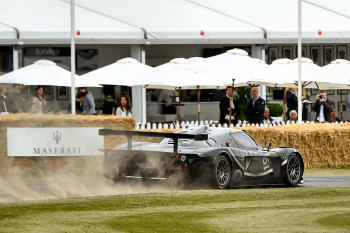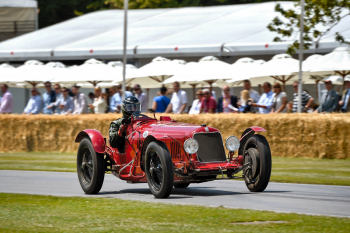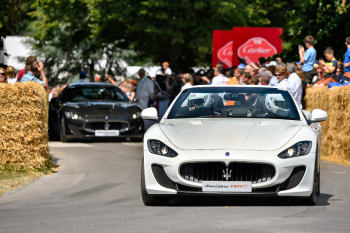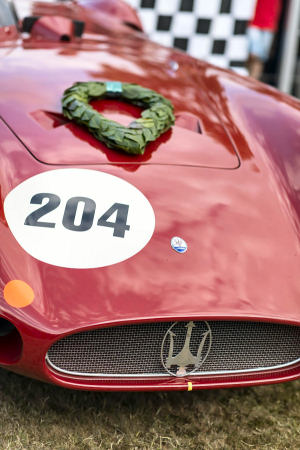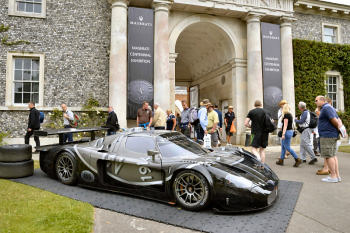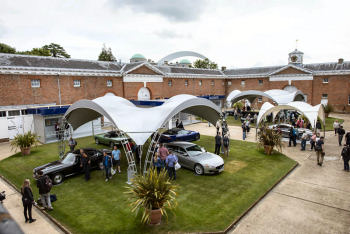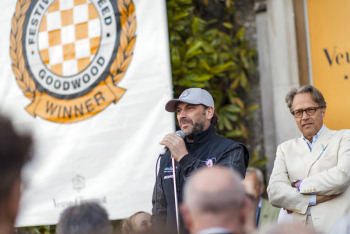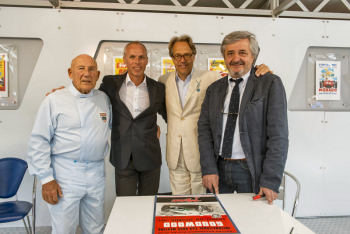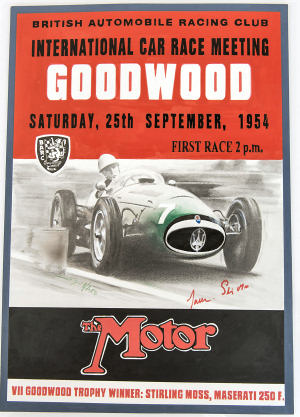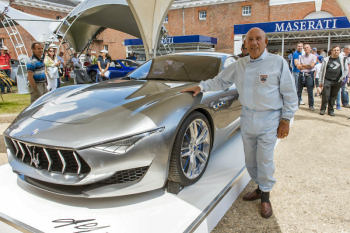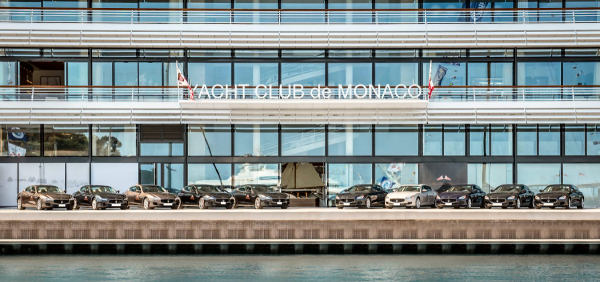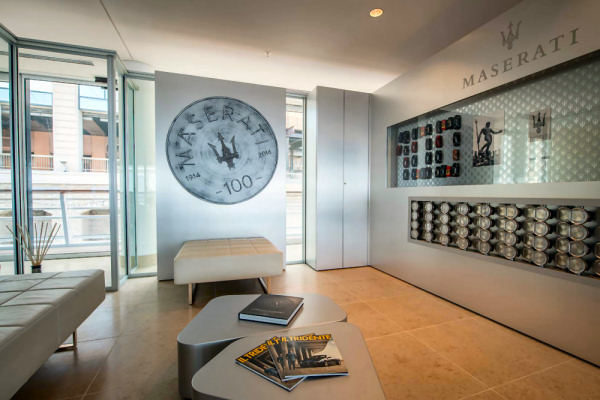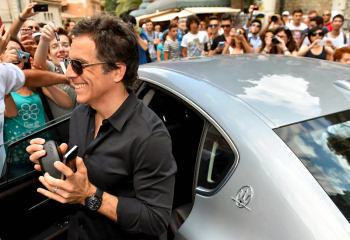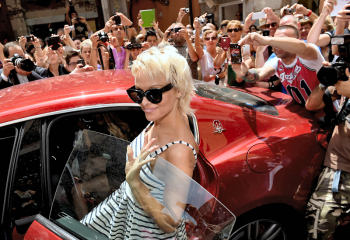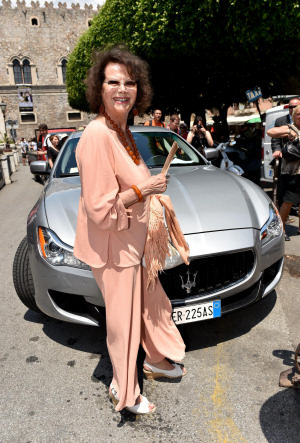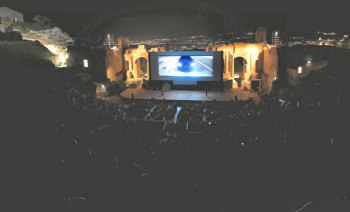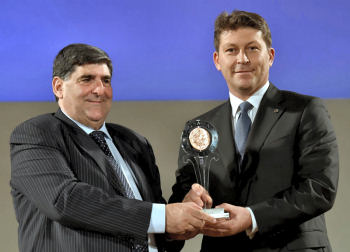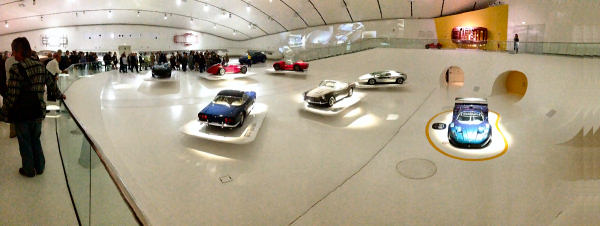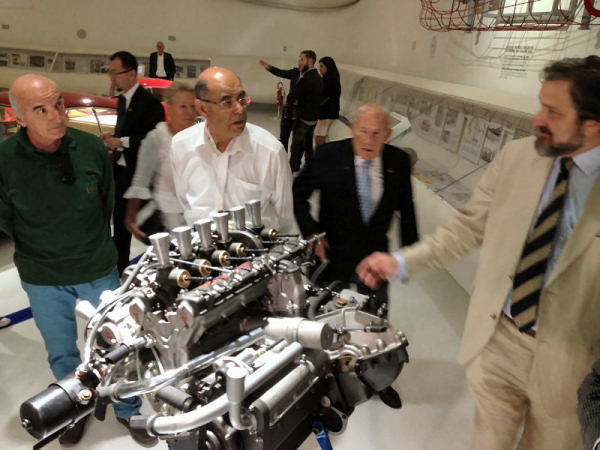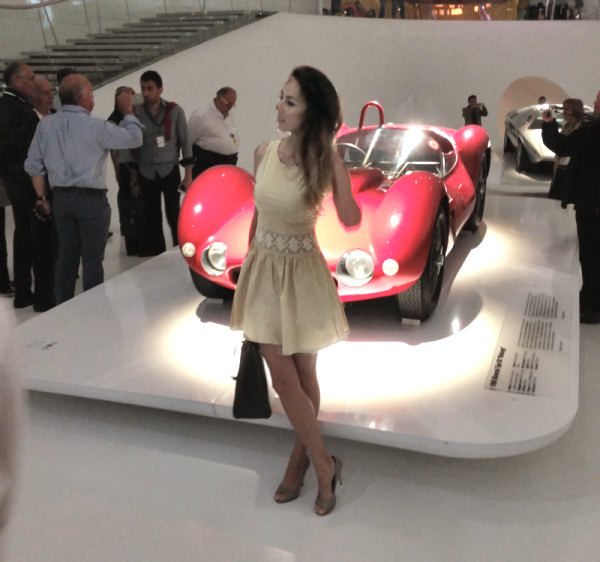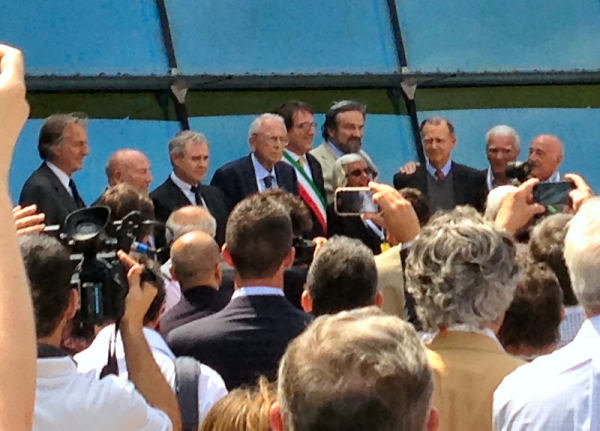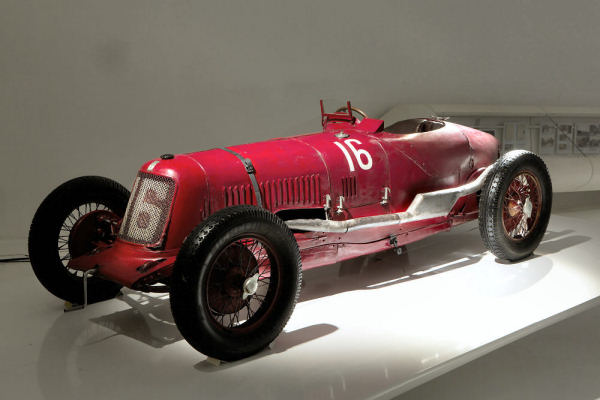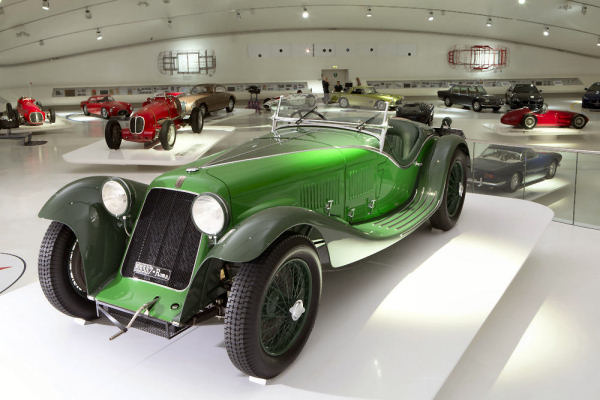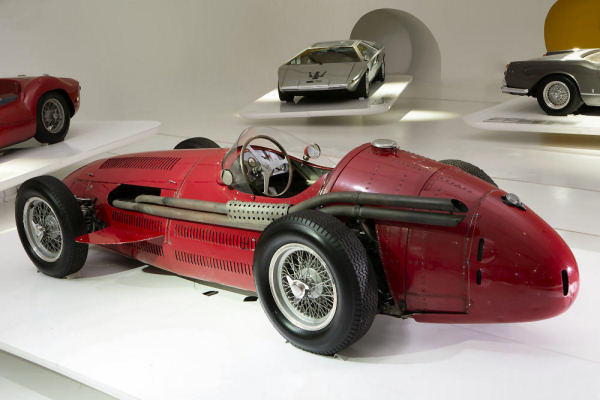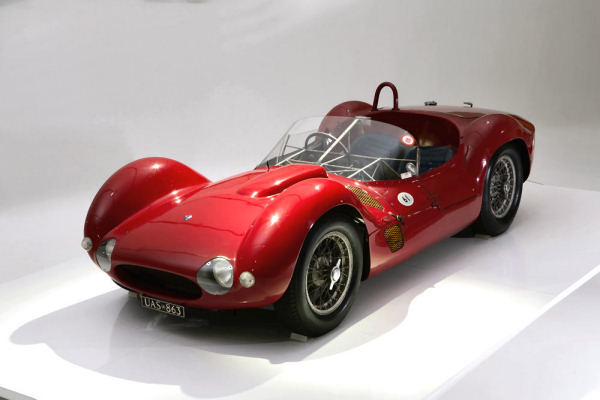| The Enthusiasts' Page | |||
All things 'Maserati'. News of forthcoming models, owner's cars, tips, 'Marque' reunions and the odd touch of humour! In fact anything of interest to the 'Maseratista'. |
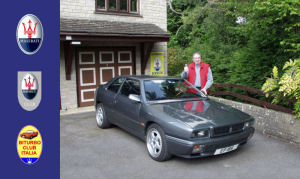 |
||
| You can click on some pictures for a better view !! | |||
| YOU ARE NOW ON PAGE 268 | ||
|
|
||
| MASERATIS AT RM AUCTIONS - Monterey 2014 | ||
Three highly important and desirable Maseratis are due to come under the hammer at the RM Auctions sale in Monterey on the 15th and 16th August 2014; a 1961 Maserati 3500 GT Coupe Speciale with coachwork by Pietro Frua, a 1959 Maserati 3500 GT Spyder Prototype with coachwork by Vignale, and a 1963 Maserati 5000GT with coachwork by Pietro Frua. |
||
Photo Credit: Erik Fuller ©2014 - Courtesy of RM Auctions
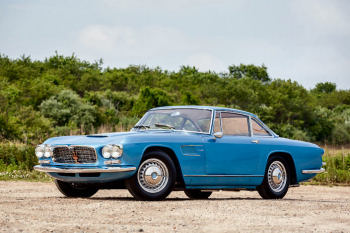 1961 Maserati 3500 GT Coupe Speciale... |
Photo Credit: Erik Fuller ©2014 - Courtesy of RM Auctions
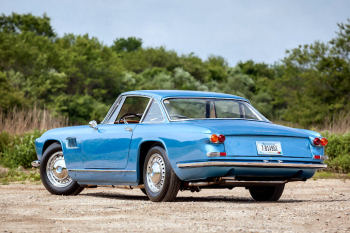 ...with coachwork by Pietro Frua |
|
The car offered here, chassis number AM101.1496, is one of two similar 3500 GT chassis bodied by Frua, both in 1961. The other was AM101.1494, and as its whereabouts have been unknown for many years, it is believed to be lost or even destroyed. Smooth, sleek side panels, curved only by a sharp crease at the beltline, connect a stunning tail. The “of the moment” quad headlamps are set in an attractively custom-designed bezel, and a thin wraparound bumper accentuates an aggressive nose with a deep inset. Typical of Frua, who loved fine detail, the car is sprinkled with delicate chrome accents, including miniature Maserati tridents above the quarter windows. Later, circa 1963, Frua built two more cars to a similar design in the fuel-injected 3500GTi series. |
||
Photo Credit: Erik Fuller ©2014 - Courtesy of RM Auctions
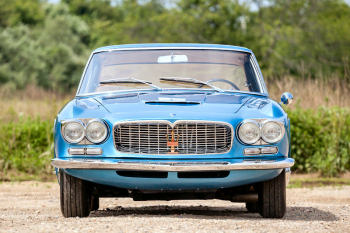 1961 Maserati 3500 GT Coupe Speciale... |
Photo Credit: Erik Fuller ©2014 - Courtesy of RM Auctions
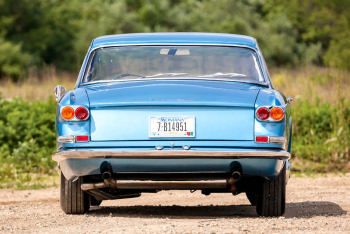 ...with coachwork by Pietro Frua |
|
Frua completed the 3500 GT in May 1961, delivering it to prominent Maserati dealer Martinelli & Sonvico, of Lugano, Switzerland. A month later, it was registered for the first time, as BE 999997, to Jacques Bordier in the city of Bern, Switzerland. |
||
Photo Credit: Erik Fuller ©2014 - Courtesy of RM Auctions
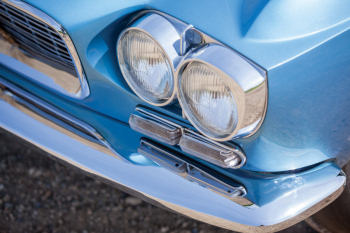 1961 Maserati 3500 GT Coupe Speciale... |
Photo Credit: Erik Fuller ©2014 - Courtesy of RM Auctions
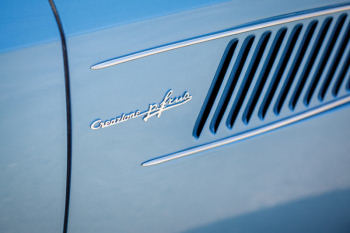 ...with coachwork by Pietro Frua |
|
The car was later imported to the United States, and by the mid-1970s, it was in the hands of a pair of enthusiasts in Chicago, although it was missing its original rear window and engine. It passed into the hands of a Dr. Harms, of Sioux Falls, South Dakota, and then to Frank Mandarano, the well-known supplier of Maserati cars, parts, and knowledge and the founder of the Concorso Italiano. Mandarano owned the unique Frua 3500 GT for several years before selling it in 1988 to Doug Speer, from whom it was acquired in 1993 by Jerry Wood. |
||
Photo Credit: Erik Fuller ©2014 - Courtesy of RM Auctions
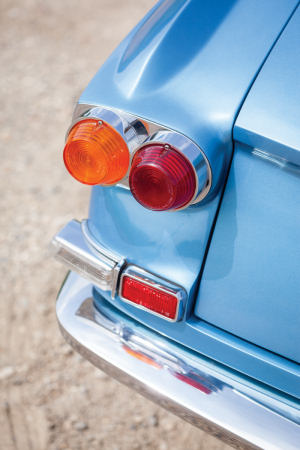 1961 Maserati 3500 GT Coupe Speciale... |
Photo Credit: Erik Fuller ©2014 - Courtesy of RM Auctions
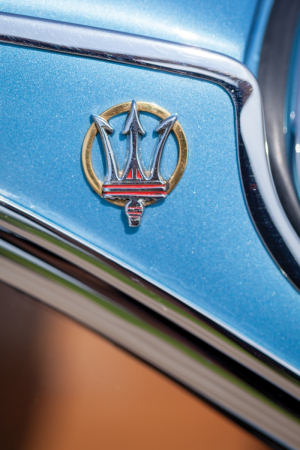 ...with coachwork by Pietro Frua |
|
In 1996, renowned Maserati collector John Bookout became the car’s next owner. Bookout extensively researched its history with his typical thoroughness, including contacting Adolfo Orsi and Frua historian Stefan Dierks. Together, the men were able to conclusively confirm the car’s identity as chassis number AM101.1496, and Bookout embarked upon the restoration. Before work had been completed, he sold the car in 2007 to another well-known marque enthusiast, Keith Duly, who is well known for the quality of his own restorations. |
||
Photo Credit: Erik Fuller ©2014 - Courtesy of RM Auctions
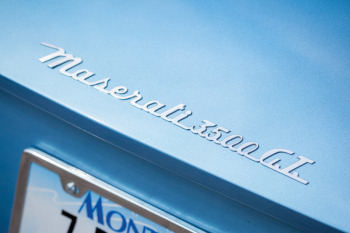 1961 Maserati 3500 GT Coupe Speciale... |
Photo Credit: Erik Fuller ©2014 - Courtesy of RM Auctions
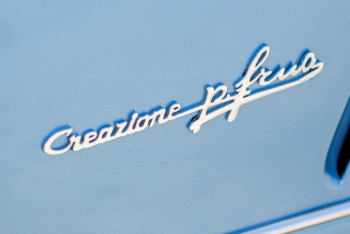 ...with coachwork by Pietro Frua |
|
Duly completed the car’s return-to-original condition, with the cosmetic work being performed by Chris Charlton, of Oxford Maine, whose restorations have won Best in Show at the Pebble Beach Concours d’Elegance, and the mechanical work being performed by Duly’s own shop. The work completed included a careful inventory of all of the car’s original components, with as many as possible being restored and reused to ensure authenticity. An earlier replacement engine installed in the car was found to be in poor condition, so it was replaced with a freshly rebuilt 3500 GT unit, which is a swap that has occurred in many 3500 GTs of this era. |
||
Photo Credit: Erik Fuller ©2014 - Courtesy of RM Auctions
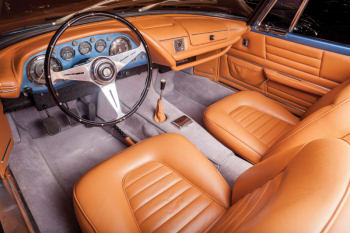 1961 Maserati 3500 GT Coupe Speciale... |
Photo Credit: Erik Fuller ©2014 - Courtesy of RM Auctions
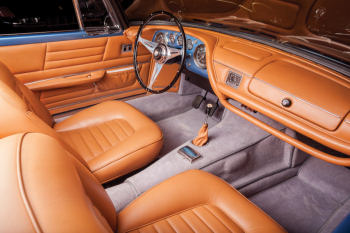 ...with coachwork by Pietro Frua |
|
The car, originally red with light brown Connolly leather upholstery, was stunningly refinished in Azzuro Metallizato with tan leather upholstery and grey carpets, resulting in a wonderfully handsome color combination for such a daring design. |
||
Photo Credit: Erik Fuller ©2014 - Courtesy of RM Auctions
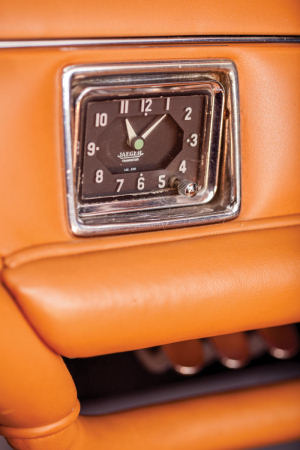 1961 Maserati 3500 GT Coupe Speciale... |
Photo Credit: Erik Fuller ©2014 - Courtesy of RM Auctions
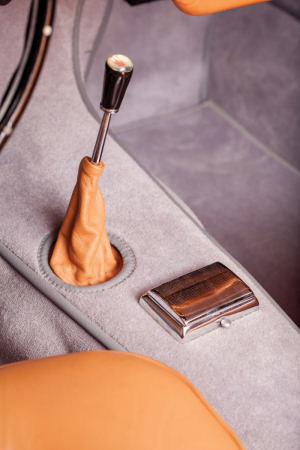 ...with coachwork by Pietro Frua |
|
After its restoration was complete, the 3500 GT Coupe Speciale was finally debuted, to much acclaim, at the 2011 Amelia Island Concours d’Elegance. It was acquired by its present owner a short time later, and while in his care, it has continued to be shown at concours and receive the best of care and service by Autosport Designs. This Speciale was recently shown at the 2014 Greenwich Concours, where it was awarded Most Outstanding Maserati, in a field where Maserati was a featured marque. The consignor notes that the car has been “serviced religiously,” and as such, it would be proper to continue on the show circuit and no doubt be a supreme pleasure to drive ! |
||
Photo Credit: Erik Fuller ©2014 - Courtesy of RM Auctions
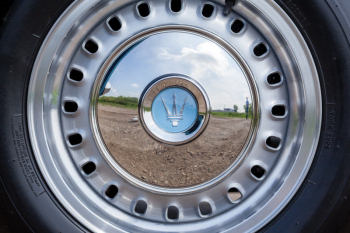 1961 Maserati 3500 GT Coupe Speciale... |
Photo Credit: Erik Fuller ©2014 - Courtesy of RM Auctions
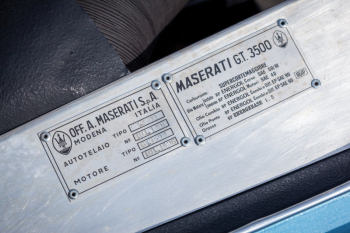 ...with coachwork by Pietro Frua |
|
It is accompanied by a certified copy of the original Technical Data Sheet and a Certificate of Origin for AM101.1496, both provided to Mr. Duly by Maserati Classiche on August 24, 2011, and copies of the handwritten build record and the original shipping invoice are also included. |
||
| 1959 MASERATI 3500 GT SPYDER PROTOTYPE Coachwork by Vignale Chassis No. AM 101*678* 220 bhp, 3,485 cc DOHC inline six-cylinder engine with triple Weber 42 DCOE carburetors, four-speed manual gearbox, independent front suspension with coil springs, live rear axle with semi-elliptic leaf springs and tubular shock absorbers, and four-wheel drum brakes. Wheelbase: 100 in. |
||
Photo Credit: Tim Scott ©2014 - Courtesy of RM Auctions
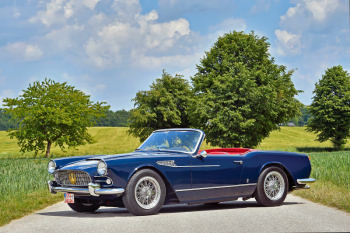 1959 Maserati 3500 GT Spyder Prototype... |
Photo Credit: Tim Scott ©2014 - Courtesy of RM Auctions
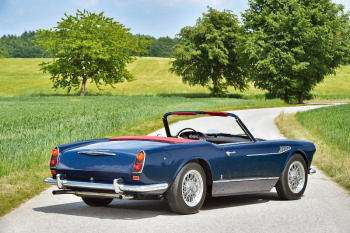 ...with coachwork by Vignale |
|
With the cancellation of its major racing programs just over the horizon, Maserati needed a production car that could catapult the company to solvency, and it found its proven straight-six engine the most suitable for serial production. Although prior models like the A6GCS/53 and A6G2000 GT were beloved by the Modena faithful, their hand-built construction and low production volume undermined any potential for profit. The 3500 GT addressed these concerns with an extension of the competition inline six-cylinder motor, which was now reworked to displace 3.5 liters and was tuned with a modified camshaft, a design based on the 350S. With elegant coupe coachwork by Touring, the 3500 GT went on to be the company’s biggest commercial success to date, eventually producing an impressive quantity of almost 2,000 examples over eight years. |
||
Photo Credit: Tim Scott ©2014 - Courtesy of RM Auctions
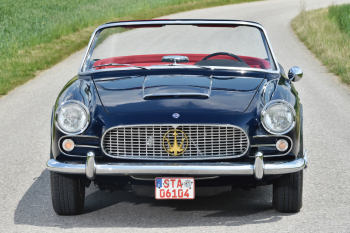 1959 Maserati 3500 GT Spyder Prototype... |
Photo Credit: Tim Scott ©2014 - Courtesy of RM Auctions
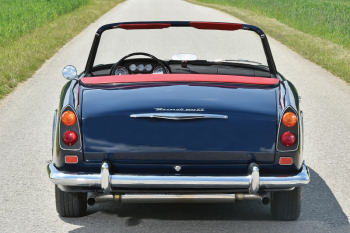 ...with coachwork by Vignale |
|
THE VIGNALE SPYDERS From the inception of the 3500 GT, Maserati intended to create a spyder version, but as was often the case with Italy’s boutique automakers of the time, considerations of capacity and choice of carrozzeriere were always challenging issues. During 1957 and 1958, Frua and Touring individually bodied at least three of the early 3500 GT Spyders, but Maserati was clearly not convinced by any of these designs. By 1959, the marque selected for production was a variation on the three that had been posed by Vignale, which officially debuted at the Turin Motor Show later that year. The Vignale Spyders were constructed on a slightly shorter wheelbase than the coupes, and they soon became the premium open Italian sports cars of their day, rivaling Ferrari’s 250 GT Cabriolets as the most elegant and exclusive sporting convertibles on the road. Just 242 examples of the luxurious Vignale Spyder were eventually produced, adding a degree of rarity to their distinctive style. |
||
Photo Credit: Tim Scott ©2014 - Courtesy of RM Auctions
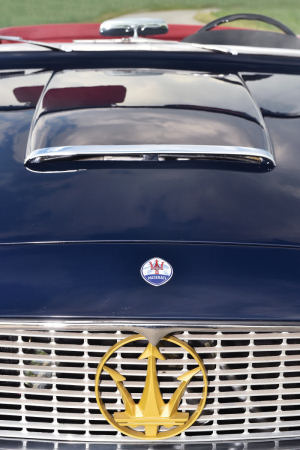 1959 Maserati 3500 GT Spyder Prototype... |
Photo Credit: Tim Scott ©2014 - Courtesy of RM Auctions
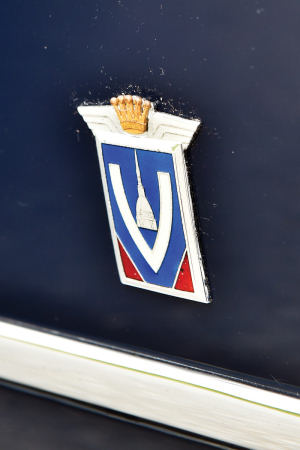 ...with coachwork by Vignale |
|
THE PROTOTYPE, CHASSIS NUMBER AM101.678 Chassis 101.678 is approximately the tenth open 3500 GT built, and it is one of as few as three prototypes built by Vignale as they searched for the perfect combination of styling cues. Physically, this car differs from the forthcoming production version in its side trim, principally with the angular semi-sweep-spear design that starts towards the front fender’s crest, carries through the door, and then commences with a mesh outlet similar to the front grille, which itself was uniquely extravagant, with its hint of Dual Ghia side grilles. This exquisite brightwork is among many features that serve to distinguish this prototype from the short center-placed vents later seen on the production Vignale Spyders. |
||
Photo Credit: Tim Scott ©2014 - Courtesy of RM Auctions
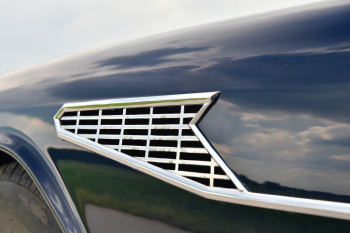 1959 Maserati 3500 GT Spyder Prototype... |
Photo Credit: Tim Scott ©2014 - Courtesy of RM Auctions
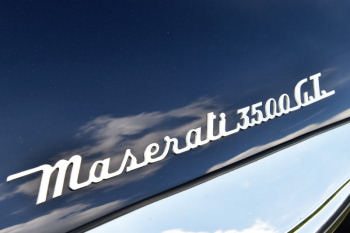 ...with coachwork by Vignale |
|
According to a copy of an original factory delivery note, this car was dispatched on February 15, 1960, to its first owner of record, Lindsey Hopkins. This was almost certainly the great investor and real estate magnate from North Carolina, who was known to be a respected sportsman in the post-war years. In addition to heavily investing in Bahamian real estate, which eventually helped fuel the Bahama Speed Week races, Mr. Hopkins sponsored his own race teams, which alternately appeared in venues as varied as the 12 Hours of Sebring and the Indianapolis 500. He also later partnered with racing team principal John Mecom to become the first owners of the New Orleans Saints NFL expansion franchise. As detailed by the original Maserati document, this Spyder was delivered in the care of Waco Motors in Miami, Florida (a city where Mr. Hopkins managed numerous business interests), prompting speculation that the car was ordered directly from the factory by the new owner. |
||
Photo Credit: Tim Scott ©2014 - Courtesy of RM Auctions
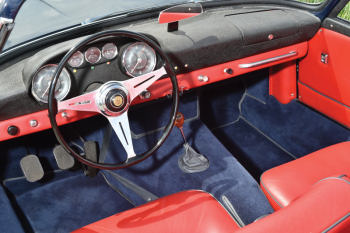 1959 Maserati 3500 GT Spyder Prototype... |
Photo Credit: Tim Scott ©2014 - Courtesy of RM Auctions
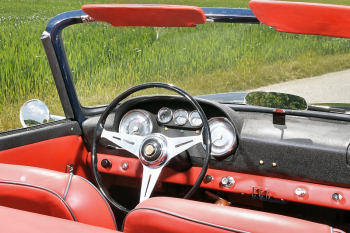 ...with coachwork by Vignale |
|
By the 1990s, chassis 101.678 had come into the care of Texas resident William Strange, who reportedly had begun a restoration but left the car in a disassembled state for a number of years. Following a bankruptcy proceeding, the car passed through a dealer to Garry Roberts, who in turn sold it in 1996 to Kenneth Glynn, of Melbourne, Australia. Mr. Glynn’s partner in the deal, marque expert and racing participant Mario Lombardi, had been searching for good barnyard-find Maserati examples to restore, and he made a deal to acquire this car and two coupes, a 3500 GT and a 3500 GTi, under Mr. Strange’s care. |
||
Photo Credit: Tim Scott ©2014 - Courtesy of RM Auctions
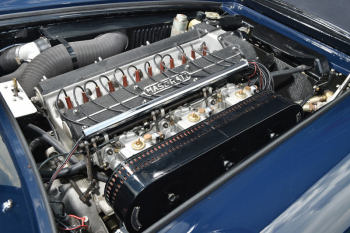 1959 Maserati 3500 GT Spyder Prototype... |
Photo Credit: Tim Scott ©2014 - Courtesy of RM Auctions
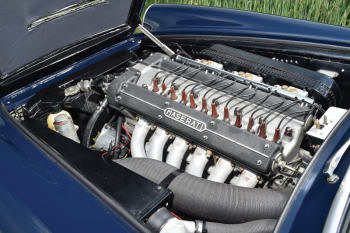 ...with coachwork by Vignale |
|
Mr. Lombardi was delighted to discover such a unique prototype example of the Vignale Spyder, and he treated the car to a full nut-and-bolt refurbishment. In addition to a complete mechanical freshening, the interior was reupholstered with red Connolly leather-covered paneling and seats with grey piping and was trimmed with complementary blue carpeting, while the exterior was refinished in a deep coat of dark blue paint. A wrinkle finish was applied to the dashboard and taillight housings, and the trunk was lined with proper diamond-quilted leather, which was to become a Maserati signature. |
||
Photo Credit: Tim Scott ©2014 - Courtesy of RM Auctions
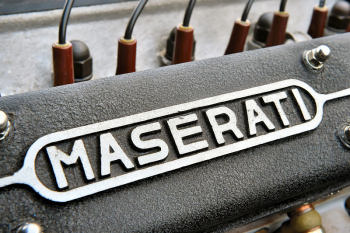 1959 Maserati 3500 GT Spyder Prototype... |
Photo Credit: Tim Scott ©2014 - Courtesy of RM Auctions
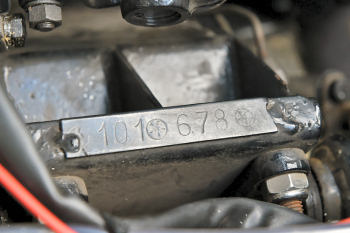 ...with coachwork by Vignale |
|
This sensationally restored 3500 GT Vignale Spyder Prototype was acquired more recently by the consignor, and to ensure that the car remains in good running condition and maintains its concours-quality presentation, it has been freshened in preparation for its current offering. It is a supremely sporty and elegant example, with its unique shortened-chassis proportions and muscular coachwork. It could easily be the crowning addition to any collection of one-off designs or early 1960s sports convertibles or an eye-catching and satisfying entrant for vintage touring events. |
||
| 1963 MASERATI 5000 GT Coachwork by Pietro Frua Chassis No. AM 103*064* Engine No. AM 103*064* 340 bhp, 4,941 cc DOHC 90-degree V-8 engine with Lucas mechanical fuel injection, five-speed manual transmission, independent front suspension with coil springs and tubular shock absorbers, live rear axle with semi-elliptic leaf springs and tubular shock absorbers, and four-wheel Girling disc brakes. Wheelbase: 104 in. • One of 34 Maserati 5000 GTs produced • The first of only two Frua-bodied examples built • The 1962 Geneva and Paris show car • Promotional car used by team owner John Simone and the Aga Khan • Factory refurbished in period for use by King Saud bin Abdulaziz Al Saud • One of the most important and glamorous Maseratis extant By the twilight of the 1950s, Maserati’s somewhat dire financial conditions had substantially improved, thanks largely to the cancellation of their storied but expensive racing program after 1957 and the successful introduction of the road going 3500 GT the same year. As the company’s first true mass-production grand touring car, the 3500 challenged the day’s Ferrari 250 GT models for elegance and power, and they soon curried favor with the era’s most well-heeled automotive connoisseurs. |
||
Photo Credit: Tim Scott ©2014 - Courtesy of RM Auctions
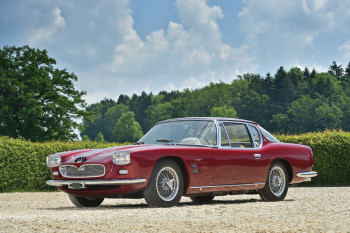 1963 Maserati 5000GT... |
Photo Credit: Tim Scott ©2014 - Courtesy of RM Auctions
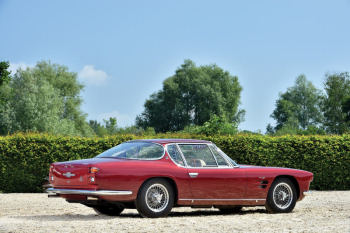 ...with coachwork by Pietro Frua |
|
One such suitor of the model was Mohammad Reza Pahlavi, the Shah of Iran, a long-time auto enthusiast who once roared around in Hispano-Suizas during his school days in Switzerland. Before his notorious 1979 exile, he filled his garage with a panoply of Rolls-Royces, Mercedes, and Lamborghinis. Intrigued by the 3500 GT’s potential, but ever keen on acquiring only bespoke, limited-production models worthy of the Peacock Throne, the Shah inquired if Maserati might create for him such a car, but one that was also equipped with the powerful five-liter V-8 that was developed for the mighty 450S sports racing car. |
||
Photo Credit: Tim Scott ©2014 - Courtesy of RM Auctions
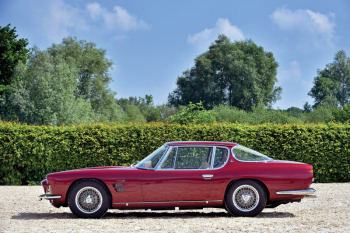 1963 Maserati 5000GT... |
Photo Credit: Tim Scott ©2014 - Courtesy of RM Auctions
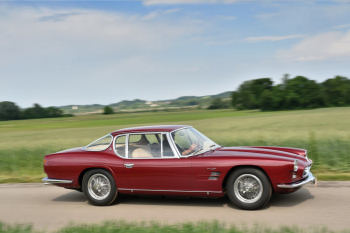 ...with coachwork by Pietro Frua |
|
Maserati, always keen to field expensive specialty orders from wealthy clients, quickly set about the task, with engineer Giulio Alfieri reinforcing a 3500 GT chassis and dropping in one of the unused 450S motors. The 2,600-milimeter tubular chassis was equipped with disc brakes up front, and Touring of Milan was selected by the Shah to clothe the car with rakish high-waisted coachwork that suggested both subtle power and masculine elegance. The new car was publicly introduced at the Turin Motor Show in November 1959, and two additional cars were soon built to the same mechanical configuration. |
||
Photo Credit: Tim Scott ©2014 - Courtesy of RM Auctions
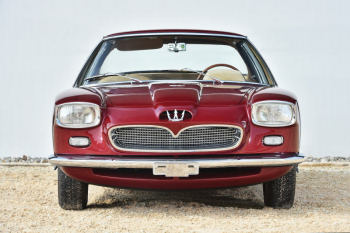 1963 Maserati 5000GT... |
Photo Credit: Tim Scott ©2014 - Courtesy of RM Auctions
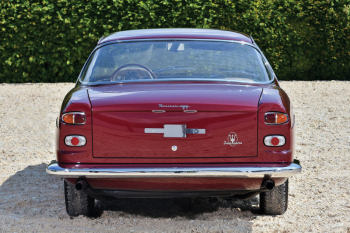 ...with coachwork by Pietro Frua |
|
Following the build of these three “first-series” cars, Alfieri modified the design to make the 5000 GT more agreeable in everyday road going conditions, as the 450S engine was famously unruly. After adjusting the bore and stroke to a slightly larger displacement, exchanging the Weber carburetors for Lucas fuel injectors, and replacing the noisy gear-driven camshafts with a triple-strand chain-cam, Alfieri produced a powerplant that was smoother, more responsive, and more appropriately refined for the elite clientele for whom the car was intended. |
||
Photo Credit: Tim Scott ©2014 - Courtesy of RM Auctions
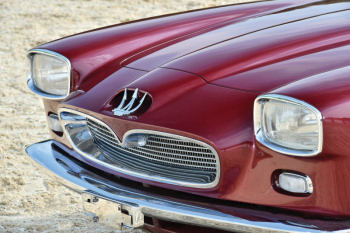 1963 Maserati 5000GT... |
Photo Credit: Tim Scott ©2014 - Courtesy of RM Auctions
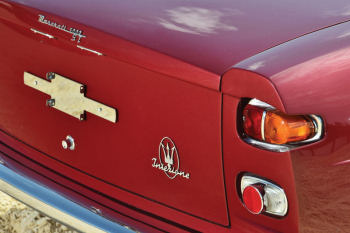 ...with coachwork by Pietro Frua |
|
At almost twice the price of the 3500 GT, and bodied by no less than eight different coachbuilders to different exterior designs, the 5000 GT was a top-shelf automobile on par with the Ferrari Superamericas being produced in Maranello, and they justifiably attracted the attention of an elite ownership base that included Gianni Agnelli, Briggs Cunningham, and the Aga Khan, among other influential buyers. By the time the final car was constructed in November 1961, just 36 examples had been built, but as two of these were essentially re-manufactured, the total number is more accurately stated as 34 chassis. |
||
Photo Credit: Tim Scott ©2014 - Courtesy of RM Auctions
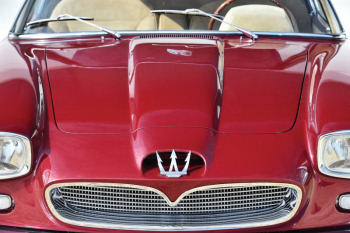 1963 Maserati 5000GT... |
Photo Credit: Tim Scott ©2014 - Courtesy of RM Auctions
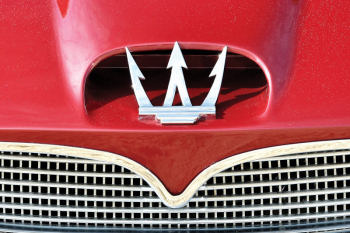 ...with coachwork by Pietro Frua |
|
This Maserati, originally built as chassis number AM103.048, was finished in gold metallic paint and appointed with a sumptuous interior of deerskin upholstery, creating a stunning livery that made for a strong impact when the car was initially exhibited at the Geneva Motor Show in March 1962. As the first Frua-bodied 5000 GT, the car displayed a number of interesting physical differences from the Touring and Allemano bodies that were produced in greater number. Its increased use of glass in the canopy was immediately noticeable. It was provided by a lower waistline that dips through the door, and rising at the rear haunch to a higher rear glass piece, the cue has the effect of endowing the car with a muscularly curved shoulder line reminiscent of Pininfarina’s 250 GT designs. Individual sculpting details in the body lines and brightwork, highlighted by a concave trident badge mounted over the grille, epitomize the car’s stunning elegance. |
||
Photo Credit: Tim Scott ©2014 - Courtesy of RM Auctions
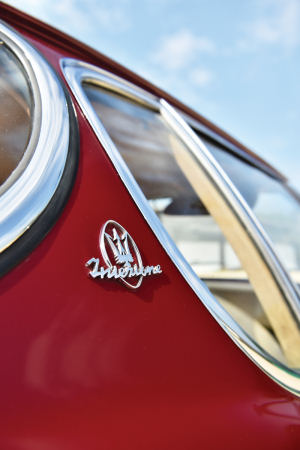 1963 Maserati 5000GT... |
Photo Credit: Tim Scott ©2014 - Courtesy of RM Auctions
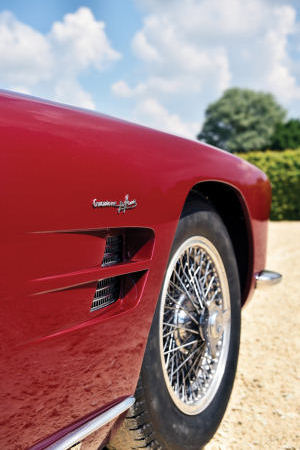 ...with coachwork by Pietro Frua |
|
After its display at the Geneva show, AM103.048 was used by French Maserati importer Colonel John Simone (a partner of Jean Thepenier) as transport from Modena to Sarthe, where the famed team owner’s Tipo 151 Maseratis were testing for the upcoming 24 Hours of Le Mans. Around this time, the car was reportedly used by the Aga Khan as well, who liked it enough to order his own Frua-bodied example (the second true Frua 5000 GT), which was constructed in August. After returning to the factory in Modena in September 1962, this car was refinished in blue-grey metallic paint and then displayed at the Paris Motor Show a month later. |
||
Photo Credit: Tim Scott ©2014 - Courtesy of RM Auctions
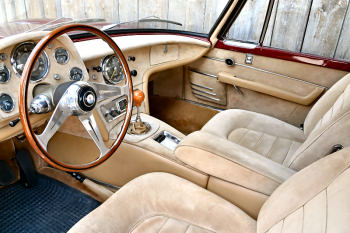 1963 Maserati 5000GT... |
Photo Credit: Tim Scott ©2014 - Courtesy of RM Auctions
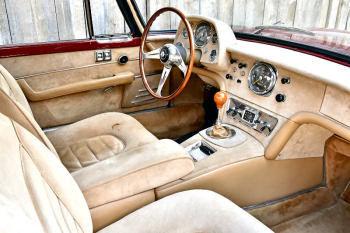 ...with coachwork by Pietro Frua |
|
The Maserati was then sold to Abdel Majid bin-Saud, a Saudi prince who bought the car for his father, the playboy King Saud bin Abdulaziz Al Saud, who was living in exile in Cairo. Capitalizing on enmities between Saudi Arabia’s Wahhabist government and the secular administration of the fiery General Abdul Gamel Nasser, the expatriate king remained a lavish guest of the Egyptians until their disastrous campaign in the Six Days War of 1967 forced Nasser to mend political fences. Rapprochement with the Saudis compelled the Egyptian dictator to ask his guest to leave, and after King Saud departed for Greece, the minimally driven Maserati was impounded by the government for tax and import levies and remained in storage in Cairo for literally decades. When finally removed from Egypt and offered at auction in Monaco in 2000, the car’s odometer still displayed just 12,700 kilometers, which in all likelihood was a true indication of actual miles accrued. |
||
Photo Credit: Tim Scott ©2014 - Courtesy of RM Auctions
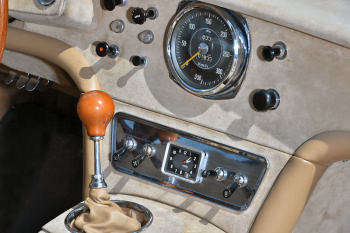 1963 Maserati 5000GT... |
Photo Credit: Tim Scott ©2014 - Courtesy of RM Auctions
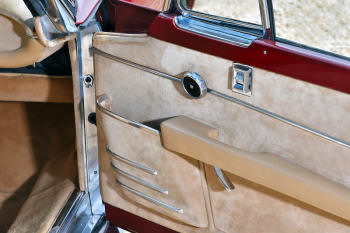 ...with coachwork by Pietro Frua |
|
The highly original and modestly driven 5000 GT was then purchased by well-known Maserati collector John Bookout, and it soon became the recipient of an exacting four-year restoration that was executed by some of Modena’s best craftsmen. The restoration team included the esteemed Franco Bacchelli and Roberto Villa, old-world body men who learned their trades respectively from Piero Drogo and Sergio Scaglietti, as well as ex-Maserati factory employee and marque expert Giuseppe Candini. Following the completion of its restoration in 2004, the Maserati was exhibited at the discerning Villa d’Este Concorso d’Eleganza, where the car earned a First Diploma and Silver Plaque and was enshrined in the event’s Roll of Honour. |
||
Photo Credit: Tim Scott ©2014 - Courtesy of RM Auctions
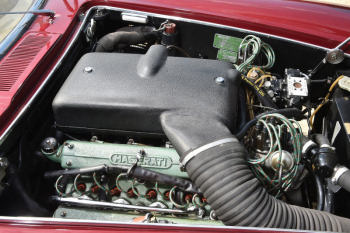 1963 Maserati 5000GT... |
Photo Credit: Tim Scott ©2014 - Courtesy of RM Auctions
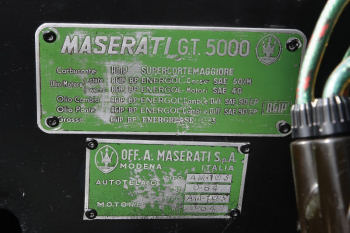 ...with coachwork by Pietro Frua |
|
More recently, this Maserati was acquired by its current owner, who commissioned Daniele Turrisi, of Brusaporto, Italy, to refinish the car in ruby red metallic paint, as per its livery while owned by King Saud. The owner presented the car in September 2013 at the Schloss-Bensberg Concours d'Élegance in Germany, where the car garnered two awards, First Place in the Frua-dedicated class and a special award for Most Thrilling Design.
As chassis AM103.064 is one of just thirty-four examples originally constructed and the first of only two bodied by Frua, it is an exceptional example of the illustrious transport that Modena was producing for the world’s most wealthy connoisseurs and elite sportsmen. The car is believed to retain its original matching-numbers engine, and it still features the unique deerskin interior that characterized its original livery. This sensational Maserati has been sympathetically restored to a beautiful state, and it offers marque collectors an unparalleled opportunity to acquire Modena’s most significant prestige road car of the post-war period in its truly rare and most glamorous carrozzeria. |
||
|
|
||
| 2014 MASERATI GHIBLI S Q4 ENGINE ON EBAY | ||
I came across this interesting item on eBay. Described as a 2014 Maserati Ghibli S Q4 3.0L V6 Twin Turbo *Collision Damaged* Parts Engine; |
||
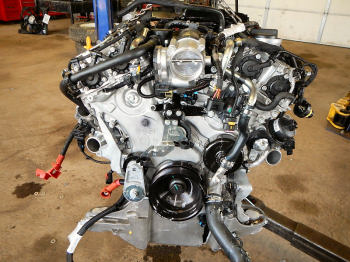 Maserati Ghibli S Q4 3.0L V6 Twin Turbo *Collision Damaged* Engine |
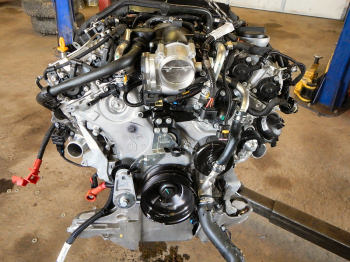 Maserati Ghibli S Q4 3.0L V6 Twin Turbo *Collision Damaged* Engine |
|
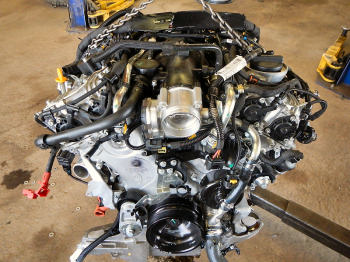 Maserati Ghibli S Q4 3.0L V6 Twin Turbo *Collision Damaged* Engine |
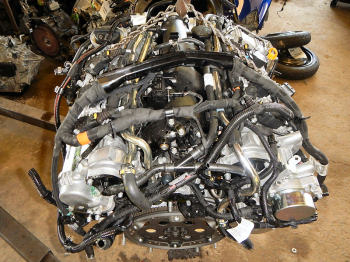 Maserati Ghibli S Q4 3.0L V6 Twin Turbo *Collision Damaged* Engine |
|
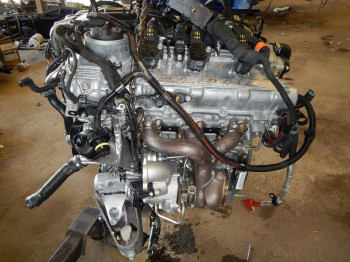 Maserati Ghibli S Q4 3.0L V6 Twin Turbo *Collision Damaged* Engine |
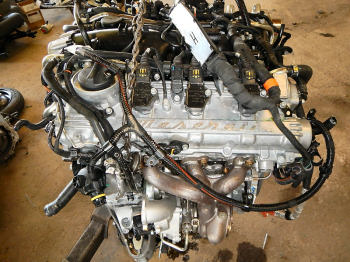 Maserati Ghibli S Q4 3.0L V6 Twin Turbo *Collision Damaged* Engine |
|
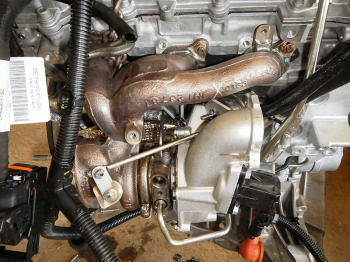 Maserati Ghibli S Q4 3.0L V6 Twin Turbo *Collision Damaged* Engine |
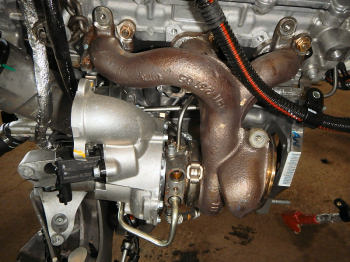 Maserati Ghibli S Q4 3.0L V6 Twin Turbo *Collision Damaged* Engine |
|
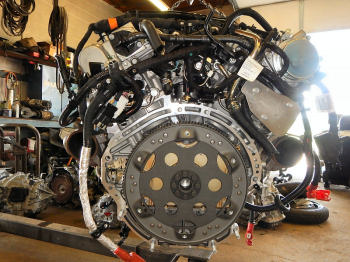 Maserati Ghibli S Q4 3.0L V6 Twin Turbo *Collision Damaged* Engine |
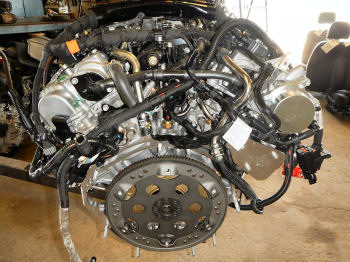 Maserati Ghibli S Q4 3.0L V6 Twin Turbo *Collision Damaged* Engine |
|
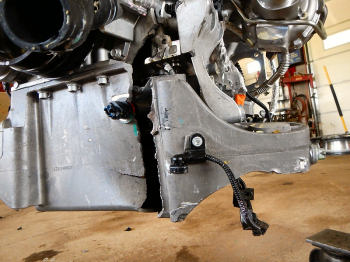 Maserati Ghibli S Q4 3.0L V6 Twin Turbo *Collision Damaged* Engine |
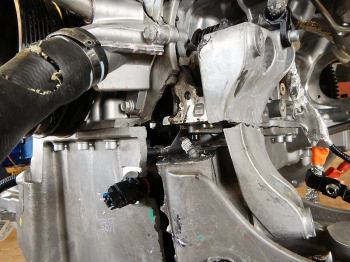 Maserati Ghibli S Q4 3.0L V6 Twin Turbo *Collision Damaged* Engine |
|
|
|
||
| CENTENARY CELEBRATIONS ENSURE BIGGEST EVER PRESENCE FOR MASERATI AT GOODWOOD FESTIVAL OF SPEED. |
||
Maserati Alfieri Concept and GranCabrio MC Centennial Edition make UK public debut. |
||
|
|
||
| MASERATI AND LA MARTINA HOST UK POLO MATCH CELEBRATING 100 YEARS OF ICONIC ITALIAN BRAND. |
||
Monday 16 June 2014: On Sunday 15 June, the British round of Maserati’s Centennial Polo Tour was held at Cirencester Park Polo Club. The Jerudong Park Polo Trophy is the third event in the Italian brand’s celebratory tour which has already seen thrilling action on the field in Palm Beach in the USA and in Tianjin in China. |
||
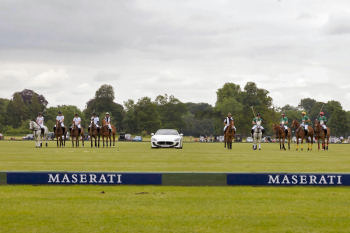 Team Maserati and Team BMG |
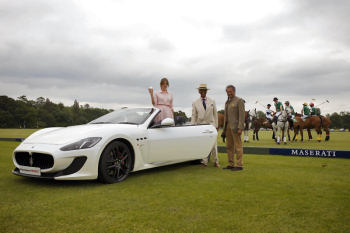 Ball throw in at the Maserati Centennial Jerudong Park Polo |
|
Playing in the UK match on the iconic Ivy Lodge ground were two very special guests; HRH The Duke of Cambridge played on the Maserati team whilst his brother HRH Prince Henry of Wales played on the opposing BMG team. Both took part in the game in aid of their chosen charities Centrepoint, Child Bereavement and Well Child. The Duchess of Cambridge and Prince George were also in attendance at Cirencester Park yesterday to cheer on HRH The Duke of Cambridge on Father’s Day. |
||
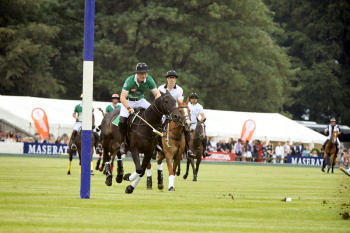 Above: HRH Prince Henry and HRH The Duke of Cambridge Right: HRH Prince Henry at the Maserati Centennial Jerudong Park Polo |
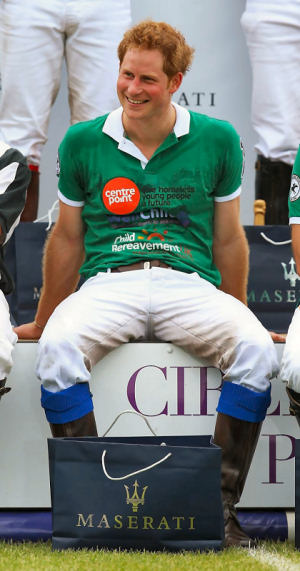 |
|
HRH The Duke of Cambridge was named ‘Most Valuable Player of the Match’ and was presented with a La Martina Pro Evolution Helmet by the polo brand’s co-founder, Gachi Ferrari. |
||
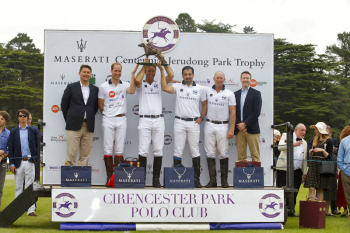 Maserati Centennial Jerudong Park Polo Trophy |
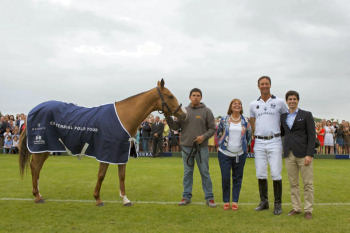 Best Playing Pony 'Maserati' |
|
Giulio Pastore, General Manager Maserati Europe, presented the winning team with a trophy alongside the club’s chairman, Kuldip Dhillon. Speaking about the event Pastore said: “Maserati was proud to be at Cirencester Park Polo Club for such a momentous match on the British social calendar. Polo is about passion, performance and style – values which we share at Maserati.” |
||
|
|
|
| MORE FOR THE ENTHUSIAST | |
 |
||
|
To enter Enrico's Maserati Pages CLICK HERE! Copyright: Enrico's Maserati Pages - © 2014. All rights reserved. |
